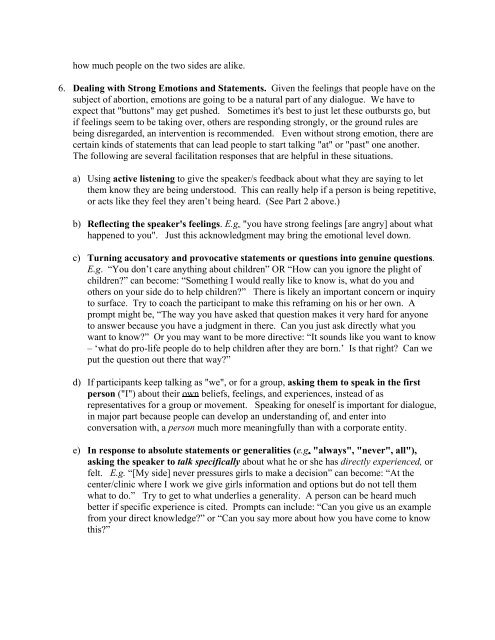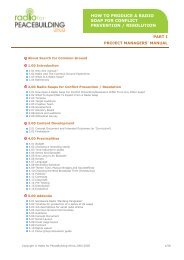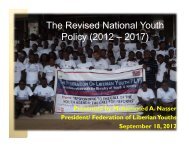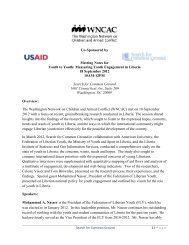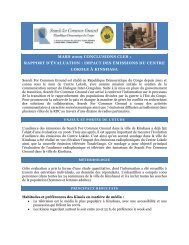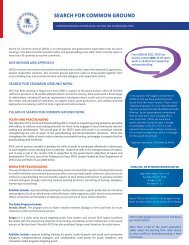The Common Ground Network for Life and Choice Manual
The Common Ground Network for Life and Choice Manual
The Common Ground Network for Life and Choice Manual
Create successful ePaper yourself
Turn your PDF publications into a flip-book with our unique Google optimized e-Paper software.
how much people on the two sides are alike.<br />
6. Dealing with Strong Emotions <strong>and</strong> Statements. Given the feelings that people have on the<br />
subject of abortion, emotions are going to be a natural part of any dialogue. We have to<br />
expect that "buttons" may get pushed. Sometimes it's best to just let these outbursts go, but<br />
if feelings seem to be taking over, others are responding strongly, or the ground rules are<br />
being disregarded, an intervention is recommended. Even without strong emotion, there are<br />
certain kinds of statements that can lead people to start talking "at" or "past" one another.<br />
<strong>The</strong> following are several facilitation responses that are helpful in these situations.<br />
a) Using active listening to give the speaker/s feedback about what they are saying to let<br />
them know they are being understood. This can really help if a person is being repetitive,<br />
or acts like they feel they aren’t being heard. (See Part 2 above.)<br />
b) Reflecting the speaker's feelings. E.g. "you have strong feelings [are angry] about what<br />
happened to you". Just this acknowledgment may bring the emotional level down.<br />
c) Turning accusatory <strong>and</strong> provocative statements or questions into genuine questions.<br />
E.g. “You don’t care anything about children” OR “How can you ignore the plight of<br />
children?” can become: “Something I would really like to know is, what do you <strong>and</strong><br />
others on your side do to help children?” <strong>The</strong>re is likely an important concern or inquiry<br />
to surface. Try to coach the participant to make this reframing on his or her own. A<br />
prompt might be, “<strong>The</strong> way you have asked that question makes it very hard <strong>for</strong> anyone<br />
to answer because you have a judgment in there. Can you just ask directly what you<br />
want to know?” Or you may want to be more directive: “It sounds like you want to know<br />
– ‘what do pro-life people do to help children after they are born.’ Is that right? Can we<br />
put the question out there that way?”<br />
d) If participants keep talking as "we", or <strong>for</strong> a group, asking them to speak in the first<br />
person ("I") about their own beliefs, feelings, <strong>and</strong> experiences, instead of as<br />
representatives <strong>for</strong> a group or movement. Speaking <strong>for</strong> oneself is important <strong>for</strong> dialogue,<br />
in major part because people can develop an underst<strong>and</strong>ing of, <strong>and</strong> enter into<br />
conversation with, a person much more meaningfully than with a corporate entity.<br />
e) In response to absolute statements or generalities (e.g. "always", "never", all"),<br />
asking the speaker to talk specifically about what he or she has directly experienced, or<br />
felt. E.g. “[My side] never pressures girls to make a decision” can become: “At the<br />
center/clinic where I work we give girls in<strong>for</strong>mation <strong>and</strong> options but do not tell them<br />
what to do.” Try to get to what underlies a generality. A person can be heard much<br />
better if specific experience is cited. Prompts can include: “Can you give us an example<br />
from your direct knowledge?” or “Can you say more about how you have come to know<br />
this?”


